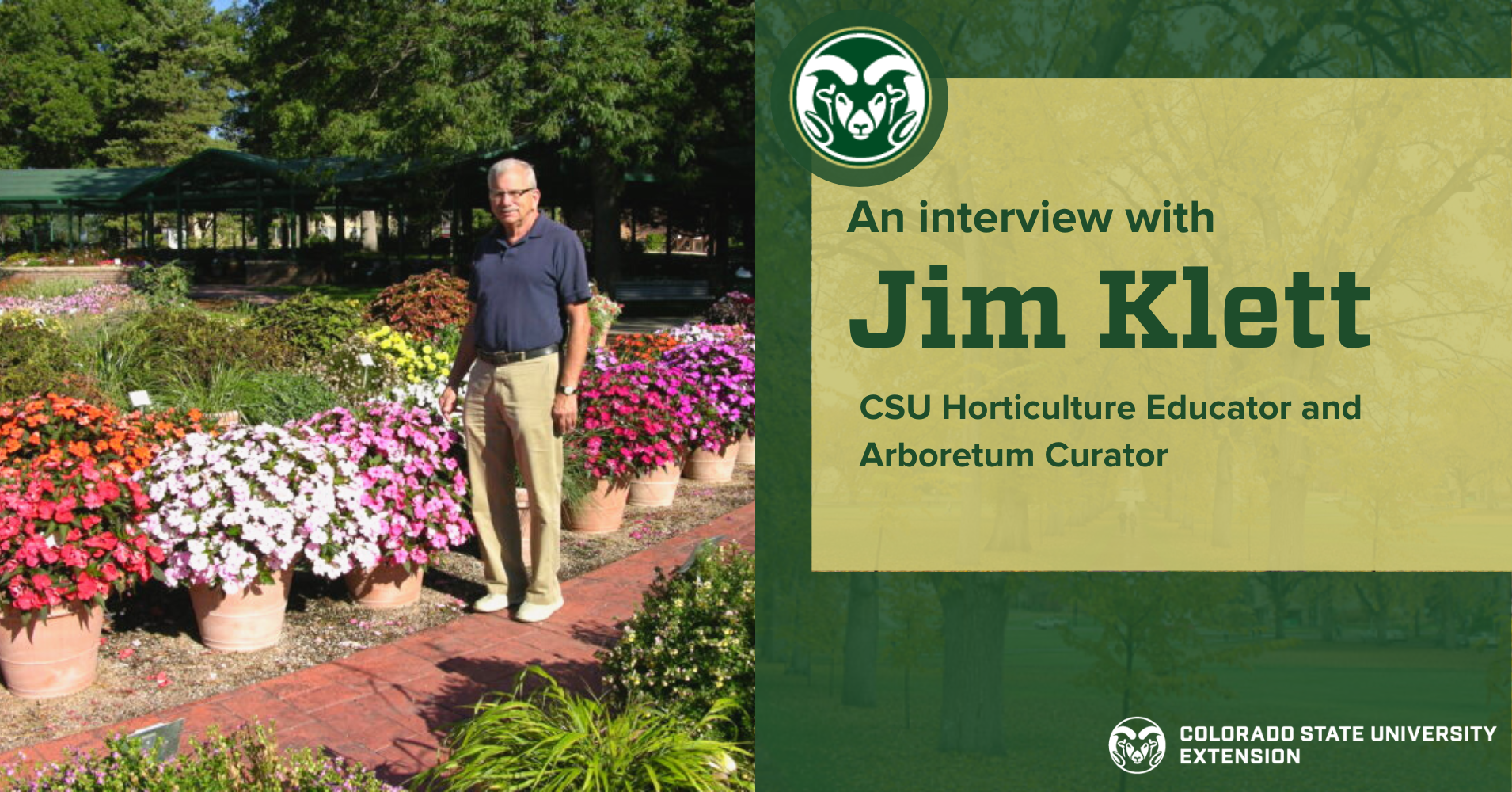Trees play a crucial role in shaping the environment around us. Their presence, or absence, affects the way we feel, our overall health, and the strength of our broader ecosystem.
To learn more about the important role that trees play on CSU’s campus we spoke to Jim Klett, who has been a horticulture educator at the University for over 40 years. Klett, who is retiring this year, also serves as curator for the CSU arboretum, which isn’t just a single location on campus, but includes the Main, South and Foothills campuses and encompasses 2,400 acres of land with 300 species of trees.

“Everybody must be able to share the benefits of trees, the benefits they give to the environment and to our overall health.”
– Jim Klett, CSU educator, horticulture expert and arboretum curator
Improving the Student Experience
“A person just has to think, ‘What would this campus look like if there was just concrete, buildings and no grass? How that would affect the overall mental state of all the students here?’ So, think about the beauty that they add, not just to the campus in attracting more students, but for the current students and future students.
The diversity of the trees and plant material makes an environment that’s going to be pleasing for the students and support their mental well-being. To accomplish this, you want to have different leaf and flower colors in fall and spring, as well as maintaining a good winter texture.
On a hot summer day, when its 95 degrees, people want the shade underneath one of those trees. In the spring, walking and seeing crabapple trees coming into bloom, the beauty of that just adds so much to an overall great campus life for students and improves the environment that they are living in and working in.”
Research Benefits for Colorado Communities
“In addition to beautification, planting diverse trees and plants is very educational too, because it helps us teach students in the classroom as well as supporting research. The research component is that we’re learning what plants will do well here along the Front Range of Colorado. Besides just knowing for what’s best for the campus, we learn about what’s best for the whole state of Colorado.
I cooperate with 15 or 20 major nurseries throughout the United States. They send me various new trees, we plant them and then take data continually every year. We’re looking at their growth rate, if they’re fast or slow. We’re looking if they get any diseases or have insect problems. We’re also looking at ornamental features, such as: flowers, fruit, fall color and how they adapt to our soil conditions.
With all of that work, plus the help of industry partners and other Extension agencies, we have come up with the Front Range Tree Recommendation List, which was published and put out for anyone to use as a guideline.
There has also been a lot research that has been done in the state of Colorado right in our Denver metro area about how lower income areas are generally more void of trees and vegetation and what the health impacts are of that.
This is something more cities are becoming aware of – like the City and County of Denver – and our research about what trees perform the best in different conditions could help inform strategies to correct these disparities. I just hope the attention on this issue will continue because I think everybody must be able to share the benefits of trees, the benefits they give to the environment and to our overall health.”
“You want to have a diverse plant palate because if you don’t and experience an epidemic, like we have right now with emerald ash borer, you could lose a tremendous percentage of your trees. To my understanding, close to 15 percent of the trees on this campus are green ash or white ash. If it an epidemic wipes out that number of trees, that’s a big portion.
So, we try to not have any more than probably five percent or so within a specific species. We are really trying to increase the diversity so that if another epidemic comes in, you’re not going to see whole blocks on campus void of trees.
Of course, we also want the CSU’s campus to be as beautiful as possible and tree diversity is a major component of that. In the landscape that we have around all our buildings, we are always trying to add more diversity among the plants planted. Especially as new buildings are built on this campus, for every tree removed at least two are planted elsewhere to replace it.”
“I would say in the last 10 or 15 years now, the students have gotten more into sustainability, which is so important today. They’re just eco-minded, you know, we didn’t have that years ago. I’m really glad to see that.
I hope I’ve had some type of an impact on students to see the benefit of trees, the benefit of being more sustainable, planting more trees and then creating a better environment also for the next couple generations.
It has been great to see so many young people come in that are interested in trees, identification, culture, and care, to see them develop and become leaders in the fields of nursery production, selection and care, in nurseries, garden centers, you name it.
Since I’ve been here, throughout the state there are so many of our graduates, that have been very successful getting this knowledge out to the general public, too.”
